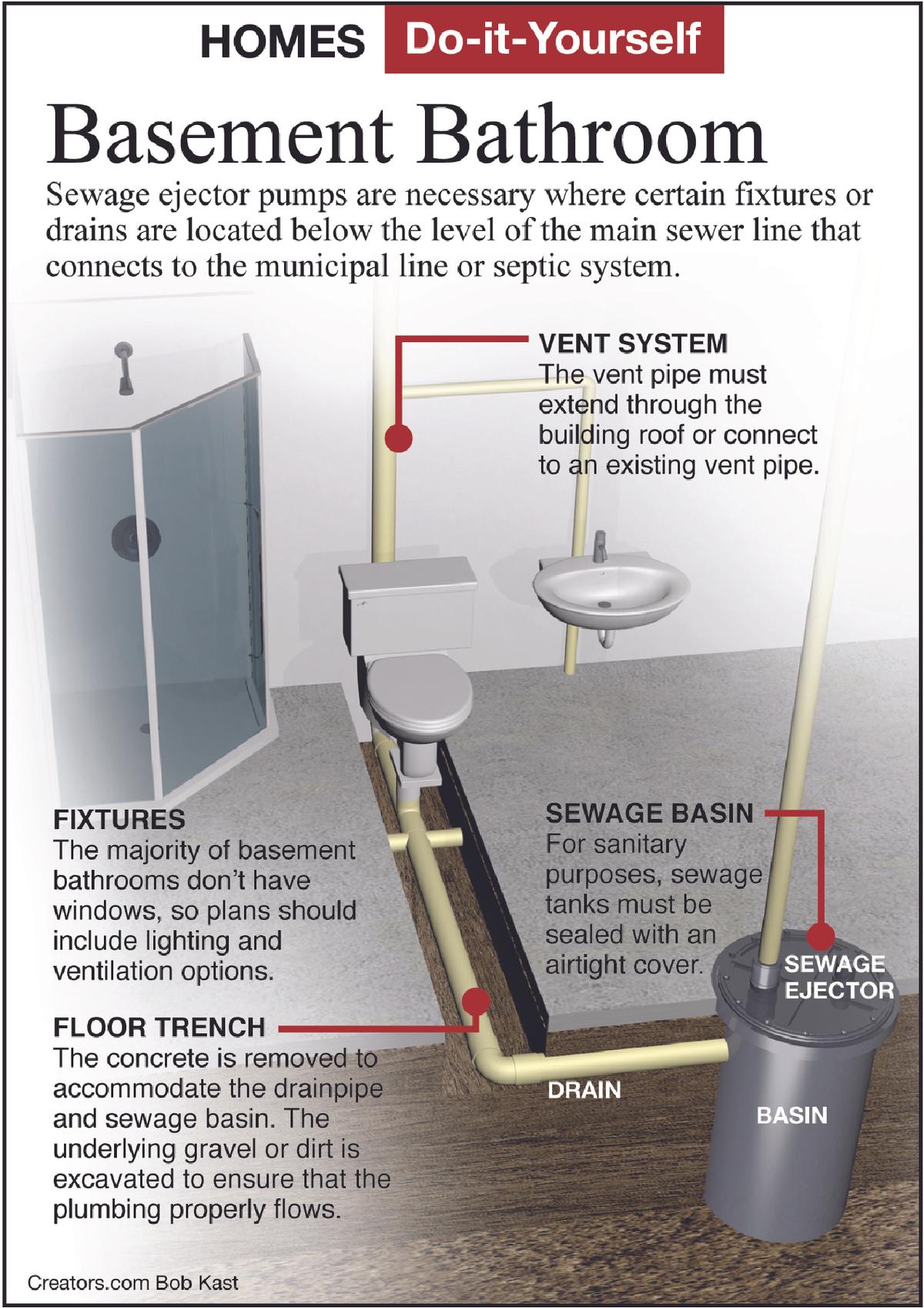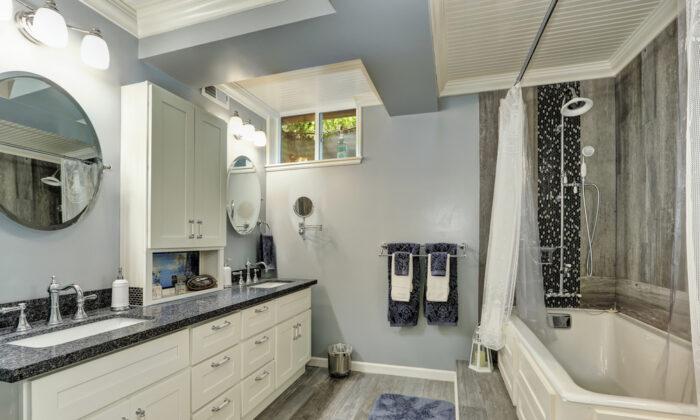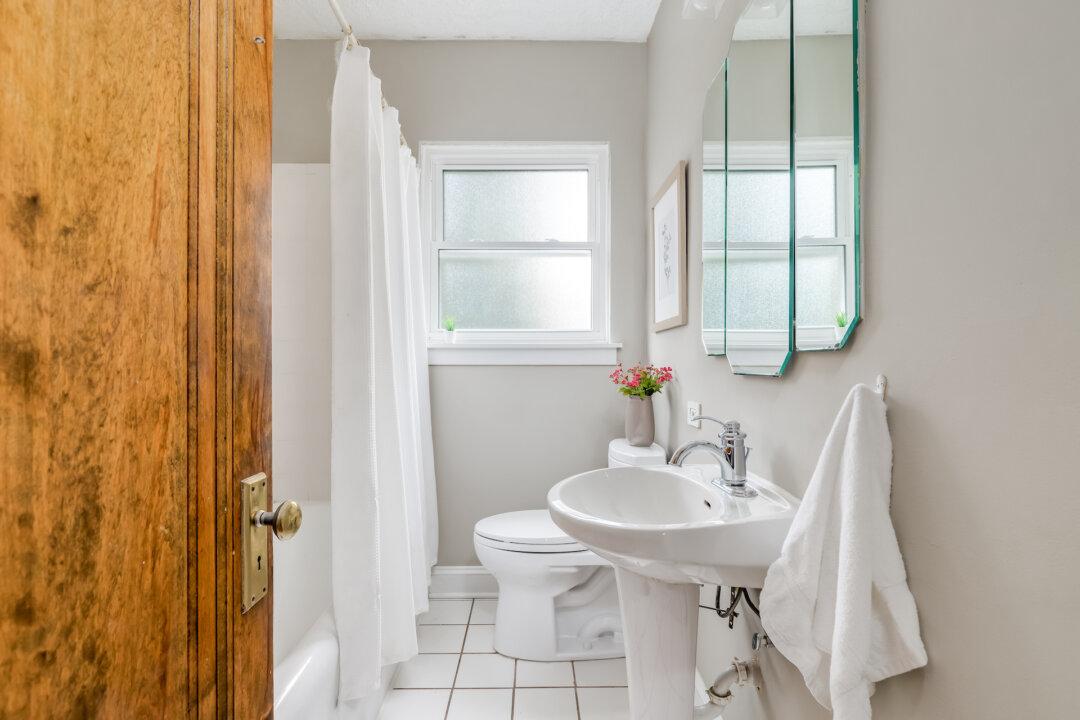Making detailed plumbing plans initially is key to a successful project. Purchase the vanity, sink, and toilet, and locate them in the room in their desired locations. Precisely mark the location of all the drain plumbing connections on the floor, and then remove them so you have room to work. This project can get very dusty if you cut concrete, so isolate the area with plastic sheeting.
There are two options for running the plumbing lines. For the nicest appearance, the concrete slab can be dug out and the drain and supply lines can be run through the trenches. Concrete is poured back into the trench to level the slab, and the new floor is covered with ceramic tile.
Another option is to install a Saniflo plumbing system above the existing concrete slab. Most of the plumbing lines can be hidden in the new lavatory walls, but the drain lines will be exposed. An electric pump unit for the drains, which will be visible, is usually located on the floor behind the toilet. A Saniflo toilet and pump unit can cost about $800 or more.
In either case, some type of electric pump is used to carry the waste drain line up to where it can be attached to the main drain system in the house. A drain vent line will also have to be installed to vent the new plumbing. This vent line will probably be attached to a main plumbing vent somewhere inside the attic.
If you choose the first option, the 1-foot-wide trenches in the floor aren’t difficult to cut. Rent a worm-drive saw with a dry-cut diamond blade. You can expect to pay about $50 for the blade and the rental fee for the saw. If you don’t already have a sledgehammer, purchase one. It will be needed to completely break out the trenches.
The worm-drive saw will cut less than 3 inches deep into the concrete slab, but most slabs are about 5 inches deep. Flood the cut lines with a lot of water to help keep the saw blade cool and to speed the cutting process. The water will quickly become a thick concrete soup from the dust. Suck it up with a wet/dry vacuum, and flood with fresh water often.
Once the trench lines are cut, break out the remaining concrete at the bottom with the sledgehammer. Dig out enough dirt from the trench so the drain lines can be sloped 1/4 inch per foot length down to the sewage tank/pump unit. Dig a deep hole for the sewage/pump tank. Install the plumbing, and compact the dirt over the plumbing. Pour concrete in the trench to level the floor, and install the finish flooring material.







Friends Read Free